Cut and Come Again Lettuce Triumpheter
When I had a market garden, I grew 200-human foot rows of lettuce. The rows contained my own mixture of lettuce varieties, chosen for sense of taste, color, and foliage shape, and I cut the leaves young for the mesclun mix I sold to local chefs. Twice a week my two young administration and I knelt in the white clover pathways to shear the baby plants.
Most of the dozen or and so lettuce varieties were the type described as cutting lettuces, which obligingly and vigorously sprout a fresh crop of leaves when they are snipped off only a couple of inches above the ground. They are frequently called cut-and-come-again lettuces.
Cutting lettuces are more often than not nonheading leafage varieties from two groups, Chiliad Rapids and oakleaf. The One thousand Rapids group produces broad, crinkled, and frilly leaves, while the oakleaf varieties have flatter and distinctively lobed leaves. Both groups include red and green varieties and several red-dark-green combinations. All make peachy garden pattern elements.
Paint the garden with lettuce
Whatsoever else I grow, I always have enough of 'Black-Seeded Simpson', an heirloom. I don't bother with little packets; I buy information technology by the ounce, almost 25,000 seeds. Properly stored, lettuce seed stays feasible for three years. 'Black-Seeded Simpson' is then reliable I use it as the standard for judging the germination success of other varieties. A fast grower, it produces crinkly, juicy, yellowish-light-green leaves. Its just shortcoming is a tendency to bolt in summertime heat; it does best in spring and fall here on Long Island.
I of the all-time summertime performers I have institute is romaine: a French cos, 'Craquerelle du Midi'. When every other lettuce in my garden is getting biting or defiantly announcing its plans to set seed, this one stays mild and leafy.
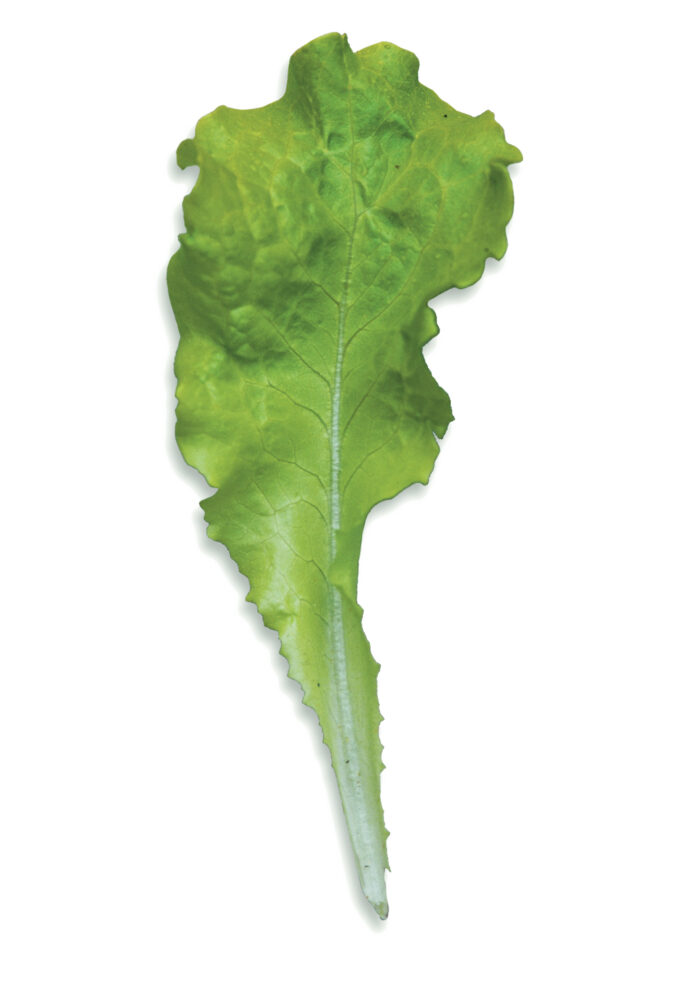 | 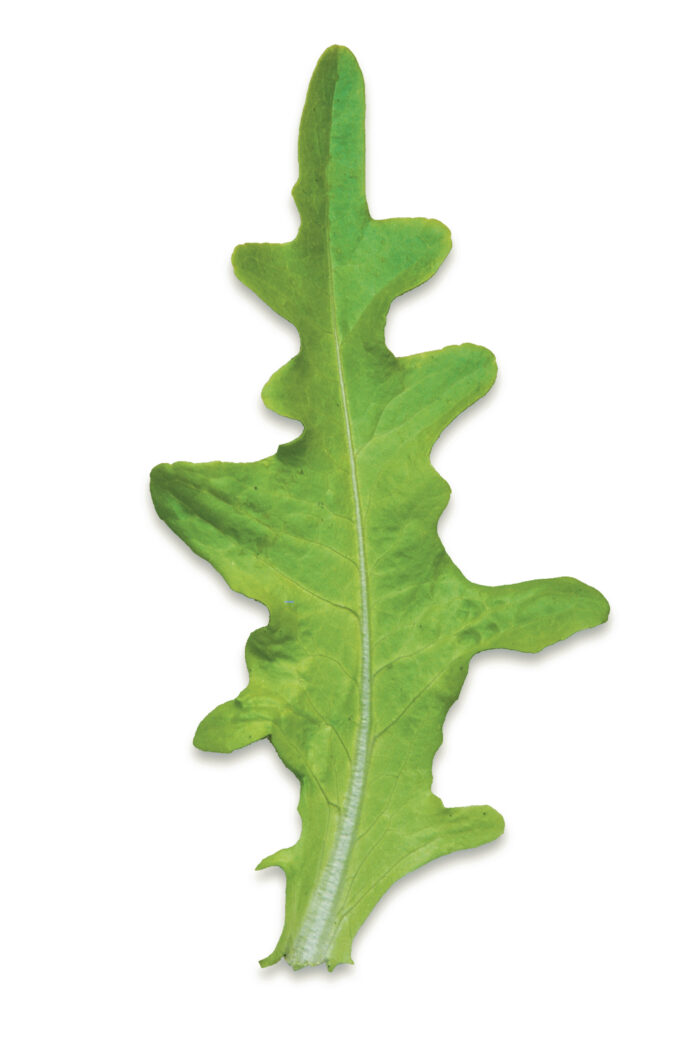 |
The red or green lobed leaves of the oakleaf types are pillars of the looseleaf establishment. There are at least one-half a dozen varieties of each color commonly found in seed catalogs. 'Oakleaf' is the original old standby that yields crisp, tender, low-cal green leaves and keeps going through moderate heat. Although it has deeply lobed leaves, 'Salad Bowl' is not a true oakleaf. Merely it is an All-America Selections winner that produces rosettes of delicate lime-green leaves and also has good estrus tolerance.
Tops for reliability, even through a hot summertime, is 'Cherry-red Sails'. Another All-America Selections winner, it's a fast grower with green and ruddy-bronze leaves.
 | 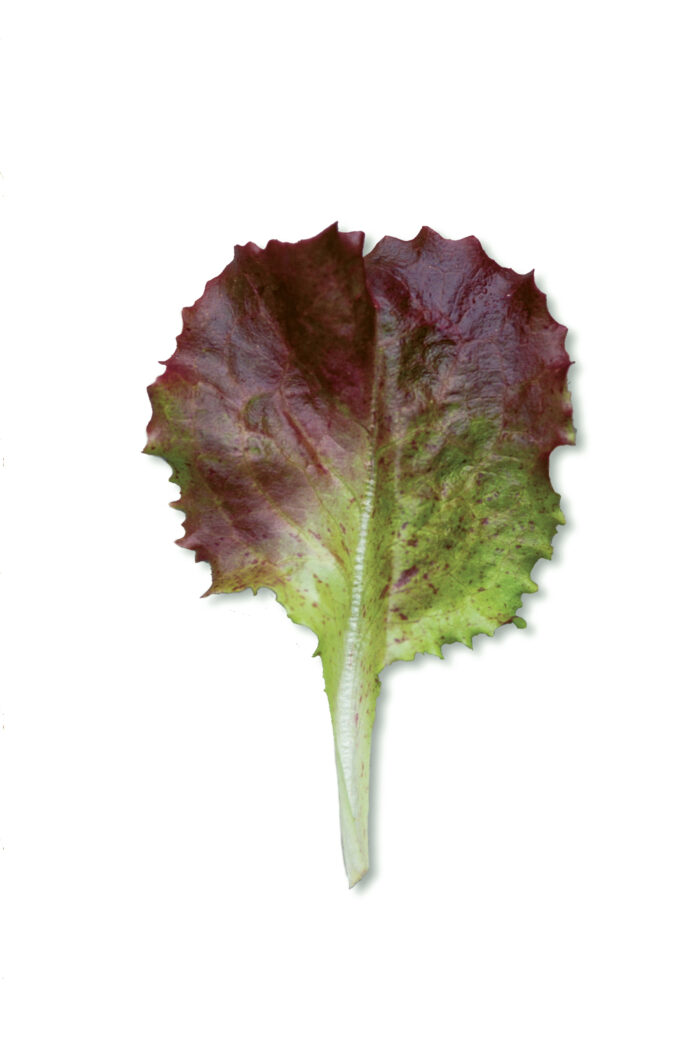 |
A 1998 introduction that did well for me was 'Dark-green Vision', which produces light-green, sleeky, savoyed leaves; it is a tedious bolter. 'Lollo Rossa' has green leaves with elegant rosy margins, while its cousin, 'Lollo Biondo', is pure pale green. Both 'Lollo' cultivars are deeply curled, heat tolerant, and very decorative both in the garden and in salads.
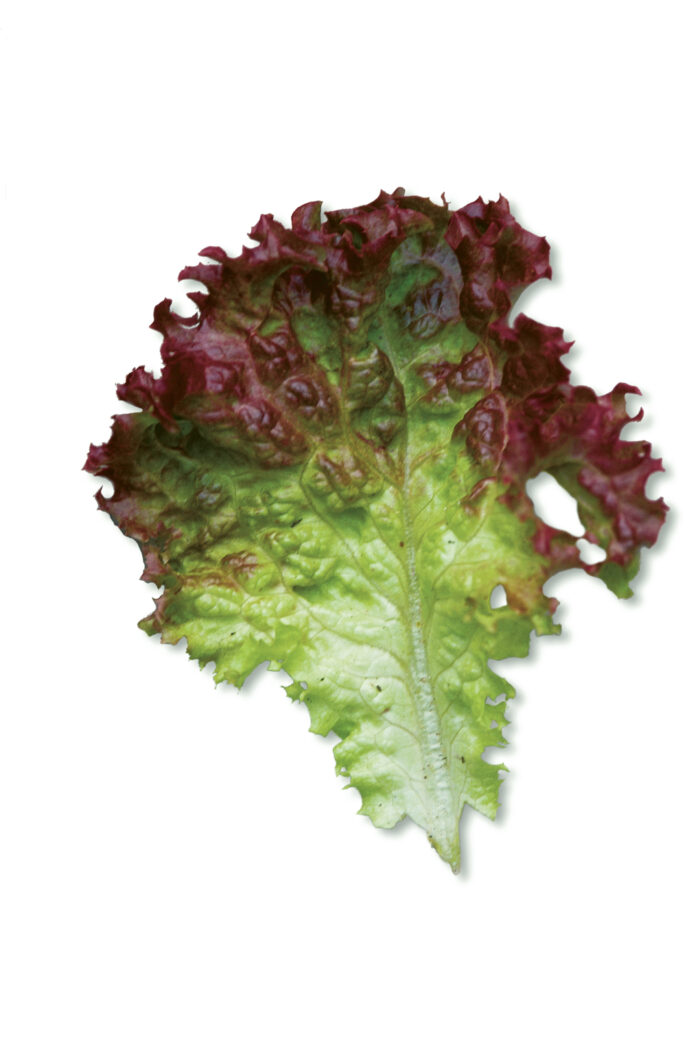 | 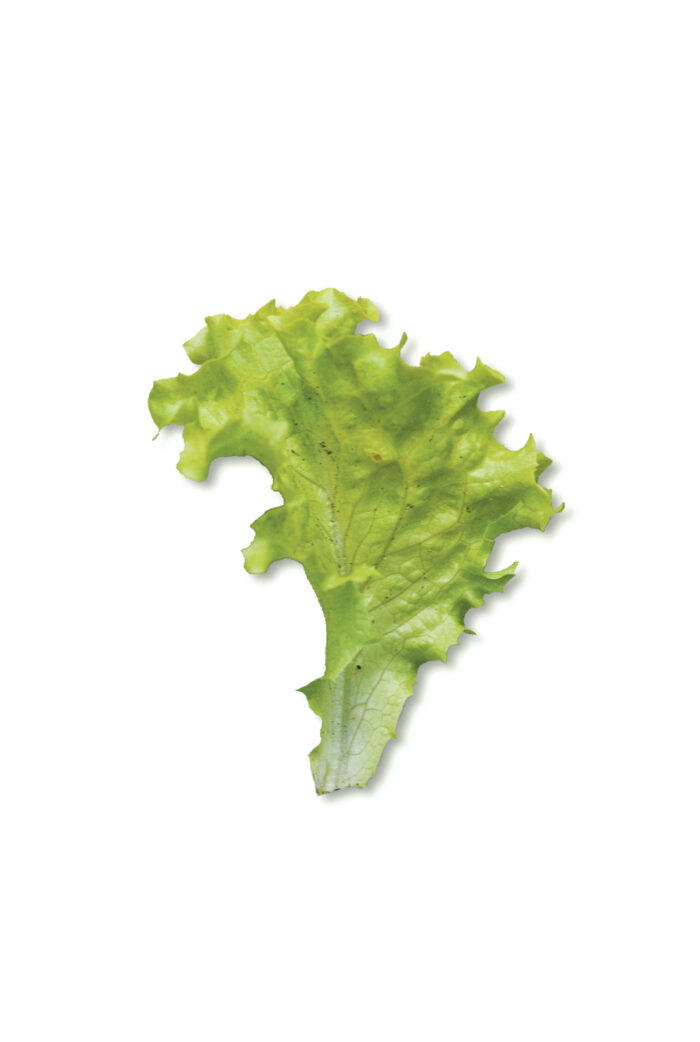 |
Stepping beyond the looseleaf varieties, there are some butterheads and romaine I like to grow equally cut lettuces. They will likewise sprout new leaves, if less energetically than the looseleaf varieties.
Of the butterheads, 'Ermosa' has dark green leaves and stands upwards to a off-white corporeality of summertime heat. In a weak prespring moment, I ordered seed for romaine called 'Freckles' or 'Trout Back', just because I liked its proper noun. I wish all my weak moments worked out this well. It is a cute lettuce—lime green flecked with wine-cherry-red markings—and has a fresh, delicate taste.
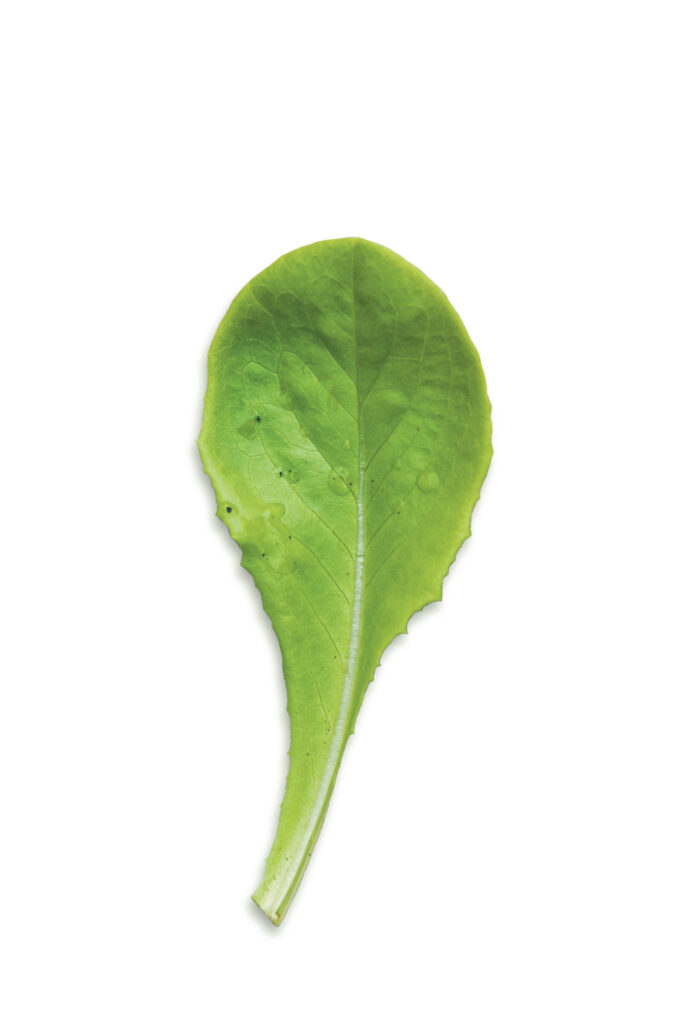 |  |
Better ways to sow minor seeds
Considering they are harvested while very immature, cutting lettuces can exist planted in adequately dense bands. Instead of broadcasting seed, information technology is just equally easy to sow rows about 3 inches apart, with ½ inch to 1 inch between plants in the row. I have found that it takes less time to constitute seed carefully than to thin seedlings; besides, if not done properly, thinning oft disturbs the roots of the seedlings that are left.
At that place are several ways to sow seed to eliminate thinning. The simplest is to mix the seed with dry out architect'due south sand (not salty beach sand), using virtually twice as much sand as seed. This makes it easier to dribble seeds at fairly fifty-fifty spacing down a marked row. An inexpensive piddling gadget that distributes seed much better than a seed packet is the Seed Sower, which has five dissimilar-size outlets to control the flow of seeds down a tapered spout.
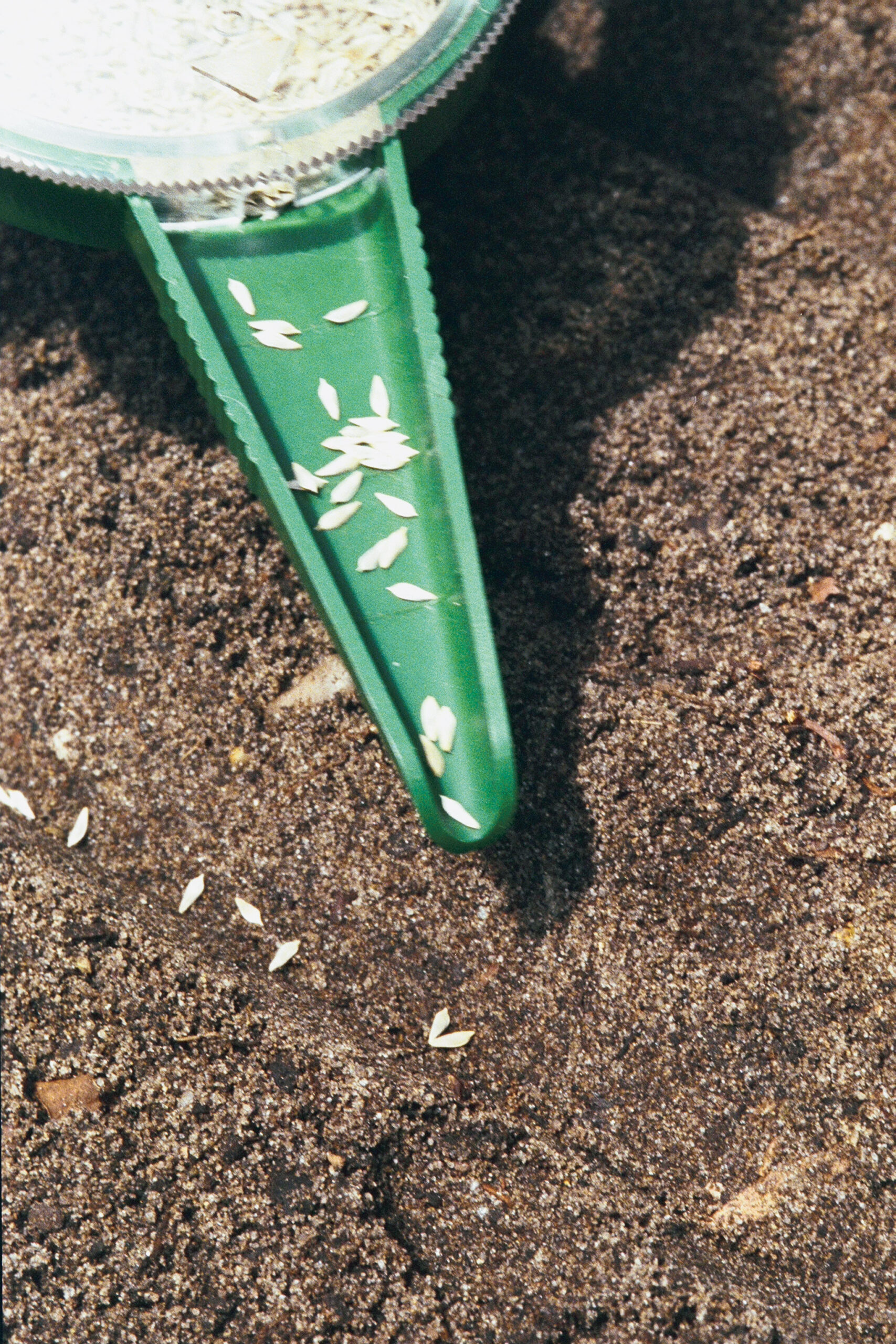 |  |
For garden rows, my one-time reliable is an Earthway Seeder, for which I now have a dozen seed plates for different seed types and spacings. It makes a furrow, plants the seed at whatsoever depth I want, covers it, and firms the ground, all in one pass.
Concluding flavour I experimented with the Pinpoint Precision Seeder, which can handle vi seed sizes. Information technology's smaller and more than maneuverable than the Earthway, and information technology works well with a finely tilled, debris-complimentary bed; however, it is a chip finicky in less-than-perfect weather. A larger version sows 4 rows 2¼ inches autonomously, perfect for mesclun.
If enough space is available, or just to confuse pests, I sometimes skip the cut-and-come-again routine in favor of harvest, hoe, rake, and reseed. I harvest the young plants, roots and all, stir the soil upwardly with a stirrup hoe, rake the bed apartment, and sow fresh seed.
Go on the soil rich
Lettuce likes a fairly rich, sandy loam. I till the beds and allow them settle for a week before applying about an inch of well-rotted manure or compost, which I work into the nearly-surface zone with the stirrup hoe. After harvesting leaves, I revive the plants with a weakfish or seaweed emulsion, or a manure tea. I have a siphon gadget on my baste-irrigation arrangement that allows me to feed emulsion or filtered manure tea down the lines. Almost drip systems can exist fitted with something similar.
Lettuce volition grow, if non thrive, in less than ideal soil, but one thing information technology must have is h2o, about an inch per week. Drip irrigation puts water just where a institute needs information technology. Overhead watering wastes a lot of water, and at the wrong time—such as tardily in the day or in hot, muggy conditions—it encourages fungal diseases.
Slugs love lettuce as much as I practice, but luckily they seem to prefer beer. A few saucers of stale beer help them drown their sorrows and themselves. I tried sugar water one time, which worked, but my bees liked information technology even more than than the slugs did.
Cutworms tin can be a hassle, but usually they won't exercise too much harm to a fairly dense band of plants. Untilled soil can harbor cutworms, so I till my beds in spring while the conditions is still cold enough to kill overwintered cutworm pupae and eggs. If cutworms become a real problem, I add parasitic nematodes to the soil about a week before planting.
How to grow lettuce
In the domicile garden, sowing every calendar week volition ensure a constant and generous supply of lettuce. Each sowing yields three or four cuttings before the plants are wearied. As a crude guide to quantity, sowing most 3 anxiety of row every week will continue one omnivorous adult well supplied with salad from spring to autumn; a vegetarian might consume twice equally much.
Lettuces prefer cool temperatures, but past sowing every calendar week, choosing heat-tolerant varieties, and using shade-fabric tunnels, I tin can produce lettuce right through my Zone 7 summers. It is like shooting fish in a barrel to keep the supply going right into winter past growing winter varieties in cold frames or tunnels of row-cover cloth. The same tunnels can exist used, covered instead with fifty percent shade cloth, to protect heat-sensitive lettuce from the summer lord's day.
And just because it'southward hot doesn't mean I finish sowing lettuce. When temperatures hit the 80s, lettuce seeds will not germinate, and so I first seeds in flats in a cool room indoors and set the plants in the garden when they take two sets of true leaves.
From early leap until the start of winter, I cut lettuces and go along several salad bowls generously supplied. Just lettuce is skillful for more than just salads. Try information technology in a creamy soup or wrapped around vinegared sushi rice for a tempting appetizer.
Sources
Burpee
300 Park Ave.
Warminster, PA 18991
800-888-1447
www.burpee.com
The Cook's Garden
PO Box 535
Londonderry, VT 05148
800-457-9703
Hermosa Valley Garden Seeds
PO Box 1409
Santa Maria, CA 93456
877-834-7333
Johnny'south Selected Seeds
955 Benton Avenue
Winslow, ME 04901
877-564-6697
world wide web.johnnysseeds.com
Source: https://www.finegardening.com/project-guides/fruits-and-vegetables/cut-and-come-again-lettuce-sampler
0 Response to "Cut and Come Again Lettuce Triumpheter"
Post a Comment